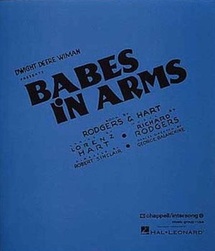
From Broadway To 52nd Street
Babes In Arms opened at the Shubert Theatre on April 14, 1937 and ran for two hundred and eighty-nine performances. The musical starred Mitzi Green (Billie Smith), Ray Heatherton (Valentine “Val” LaMar), Alfred Drake and the Nicholas Brothers.
The music composed by Richard Rodgers and the lyrics were provided by Lorenz Hart and from their score arose five songs that are jazz standards – I Wish I Were In Love Again, Johnny One Note, The Lady Is A Tramp, and Where Or When.
The musicals most famous and recorded composition, My Funny Valentine, in which Billie sings to Val first poking fun at some of Valentine’s characteristics but ultimately affirming that he makes her smile and that she doesn’t want him to change.
The Story: With a threat of being assigned to a work farm, the children of traveling vaudevillians band together to mount a musical revue. The show wins critical acclaim but loses money. So the children are sent to the farm. They are rescued when a French aviator on a transatlantic flight, makes an emergency landing on the farm, coming to their aid.
Jazz History: In the 1930s swing jazz emerged as a dominant form in American music, in which some virtuoso soloists became as famous as the bandleaders. Key figures in developing the “big” jazz band included bandleaders and arrangers Count Basie, Cab Calloway, Jimmy and Tommy Dorsey, Duke Ellington, Benny Goodman, Fletcher Henderson, Earl Hines, Glenn Miller and Artie Shaw.
Ellington and his band members composed numerous swing era hits that have become standards: “It Don’t Mean A Thing (If It Ain’t Got That Swing), Sophisticated Lady, Caravan were among them. Also during this period trumpeter, bandleader and singer Louis Armstrong was a much-imitated innovator of early jazz.
More Posts: broadway
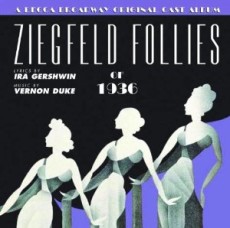
From Broadway To 52nd Street
The Ziegfeld Follies of 1936 premiered on Broadway at the Winter Garden Theatre on January 30, 1936 and closed on May 9, 1936 after 115 performances due to Fanny Brice’s illness. The musical had a return engagement on Broadway at the Winter Garden Theatre on September 14, 1936, and closed on December 19, 1936 after 112 performances. Brice reprised her role, with the additional cast that included Gypsy Rose Lee.
The musical was produced by Billie Burke Ziegfeld, Lee Shubert and J. J. Shubert; directed by John Murray Anderson and Edward Clarke Lilley; choreographed by Robert Alton; sketches directed by Edward D. Dowling; ballets directed by George Balanchine and scenic design and costumes were by Vincente Minnelli.
Vernon Duke composed the music with lyrics by Ira Gershwin and a cast starring Fanny Brice, Bob Hope, Eve Arden, Josephine Baker and the Nicholas Brothers.
The Story: In the opening number Brice mocks her famous song (“My Man”) in “He Hasn’t a Thing Except Me”, standing against a lamp-post. In “The Sweepstakes Taker” Brice portrays a Jewish Bronx housewife who wins the Irish sweepstakes. In “Fancy Free’ she becomes the affected and bored British “Zuleika” as she exchanges witty remarks with her husband Sir Robert, and, leaving behind elegance, burps in his face and utters a trade-mark “Denk you.” As Baby Snooks, Brice stars with popular stars of the day such as Clark Gable. The only song to become popular from the musical was “I Can’t Get Started” sung by Bob Hope to Eve Arden.
Broadway History: The musical was not all that was spawned from within the hallowed walls of the Broadway theatre. A new age of American playwright with the emergence of Eugene O’Neill, whose successful plays such as Beyond the Horizon, Anna Christie and The Hairy Ape proved that there was an audience for serious drama on Broadway, thus ushering major dramatists like Elmer Rice, Maxwell Anderson, Robert E. Sherwood, Tennessee Williams and Arthur Miller. Comedy and classical revivals became the norm on Broadway and opened the doors for dramas addressing the rise of Nazism and America’s non-intervention in the approaching world war. The most successful was Lillian Hellman’s “Watch on the Rhine” that would open in April 1941.
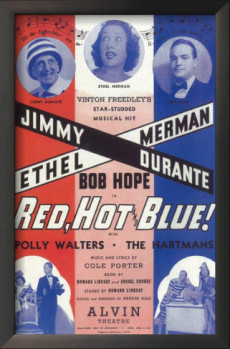
From Broadway To 52nd Street
Red, Hot And Blue! opened the Alvin Theater stage on October 29, 1936. The music and lyrics, composed by Cole Porter, rendered the tune “It’s De-Lovely” sung by Ethel Merman. Though the show only ran for one hundred and eighty-three performances, the song became an enduring jazz standard. The story taken from the book by Howard Lindsay and Russell Crouse goes as follows:
The Story: Loud and brassy manicurist Nails O’Reilly Duquesne is a newly wealthy young widow. Organizing a benefit for her favorite cause, the rehabilitation of ex-convicts, she teams with her ex-con sidekick Policy Pinkle and her “square” boyfriend, lawyer Bob Hale. Soon she embarks on a nationwide search for Bob’s old girlfriend, which is really the reason for the enterprise. However, the national lottery that Nails starts gets the attention of the Finance Committee, winding up in Washington DC in an even more complicated situation, with the Supreme Court declaring the lottery unconstitutional, because it would benefit the people.
Jazz History: The blocks of 52nd Street between Fifth and Seventh Avenue were renowned in the mid-20th century for the abundance of jazz clubs and lively street life. The street was convenient to musicians playing on Broadway and the “legitimate” nightclubs and in the CBS studio. Musicians who played for others in the early evening played for themselves on 52nd Street.
In its heyday from 1930 through the early 1950s, 52nd Street clubs hosted such jazz legends as Miles Davis, Harry Gibson, Dizzy Gillespie, Billie Hoiday, Nat Jaffe, Marian McPartland, Thelonious Monk, Charlie Parker, Louis Prima, Art Tatum, Fats Waller and numerous more. Although musicians from all schools performed there, after Minton’s Playhouse in Harlem, 52nd Street was the second most important place for the dissemination of bebop. In fact, a tune called “52nd Street Theme” by Thelonious Monk became a bebop anthem and jazz standard.
Sponsored By
www.whatissuitetabu.com
More Posts: broadway
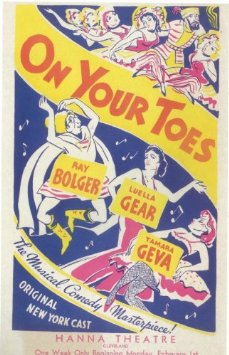
From Broadway To 52nd Street
On Your Toes opened at the Imperial Theater on April 11, 1936. The show ran three hundred and fifteen performances and the music and lyrics were once again composed by Richard Rodgers and Lorenz Hart. The production starred Ray Bolger, Tamara Geva and Doris Carson.
the Story: Junior Dolan, son of an old vaudevillian, becomes a music professor. He takes on the task of helping a struggling Russian ballet company. When complications arise, Junior is forced to take the place of the lead dancer and perform opposite Vera Barnova. Gangsters try to shoot him during the ballet but they are apprehended in time for a happy ending that included his proposal of marriage to sweet Frankie Frayne. From this musical came two songs that have endured as jazz classics – Glad To Be Unhappy and There’s A Small Hotel.
Broadway History: Broadway and 39th Street became the site where Aronson built The Casino with the procurement of financing from some of the wealthiest finance wizards of the day – the Goulds, Roosevelts, Vanderbilts and Morgans. When it opened I n 1882, The Casino was considered the finest example of Moorish architecture outside of Spain.
While Aronson was building his theatre, Charles Frohman had begun his separate career as the manager of theatrical professionals and in 1893 opened his own theatre. The Empire was one block up from The Casino. In November of that year Abbey’s Theatre opened next door to The Casino and the uptown migration of the theatre district continued. The Casino led the way for a number of entrepreneurs to build in the vicinity of Longacre Square, a long open promenade where Broadway crossed 7th Avenue. Following Aronson’s lead, the likes of Charles Frohman, Henry Abbey, Oscar Hammerstein and the Shuberts were among the investors and creators of the new theatre district.
Sponsored By
www.whatissuitetabu.com
More Posts: broadway
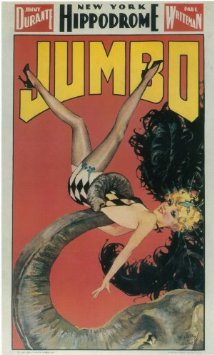
From Broadway To 52nd Street
The Richard Rodgers and Lorenz Hart music written for Jumbo was first heard on November 16, 1935 on the stage of the Hippodrome. Rodgers and Hart wrote three timeless classics that became jazz standards: My Romance, Little Girl Blue and The Most Beautiful Girl In The World. The musical ran for 233 performances and starred Jimmy Durante, Donald Novis, Gloria Grafton and a number of circus specialty acts.
The Story: It’s a Circus tale about two feuding circus magnates, Mulligan & Considine, who are dismayed to learn their children have fallen in love. Considine’s problems compound by his drinking and imminent bankruptcy. His money difficulties are solved when his agent burns down his house allowing him to collect his insurance. When the kids reconcile the fathers, Considine puts the bottle on the shelf.
Jazz History: Jazz standards are musical compositions that are widely known, performed and recorded by jazz artists as part of the genre’s musical repertoire. This list includes compositions written in the 1930s that are considered standards by at least one major fake book publication or reference work. Some of the tunes like Summertime, All The things You Are, My Funny Valentine and Body and Soul were already well known standards by the 1940s, while others were popularized later.
Sponsored By
www.whatissuitetabu.com
More Posts: broadway


